Purifying your synthetic product efficiently in high yield with minimal impurities is every chemist’s goal. At discovery-scale, flash chromatography is the go-to purification technique as it is relatively simple and effective.
For synthetic intermediates, purity targets typically are >85% with yield being a more important metric. However, since these synthetic intermediates are usually new molecules, they have a high inherent value and so the question is – why is 85% purity OK for any novel synthetic compound? Any impurities/by-products still present can create more by-products with subsequent reactions further complicating those purifications. Doesn’t it make sense to use a purification technique that maximizes purity?
That is the focus of this post. Employing simple strategies to maximize product purity using flash chromatography.
I have posted several times on method optimization, both normal- and reversed-phase, using existing products and technology including TLC to linear gradient, TLC to step gradients, both found on Biotage® Selekt and Biotage® Isolera platforms and a feature on Isolera that optimizes a previous flash method into a step gradient.
Generic 0-100% Linear Gradient
A typical 0-100% linear gradient consumes 13 or more column volumes to complete a sample purification and may not actually provide the desired product purity because there is no relatable correlation between compound affinity differences for the solvent and sorbent which is gleaned from using TLC and is useful in method optimization, Figure 1.
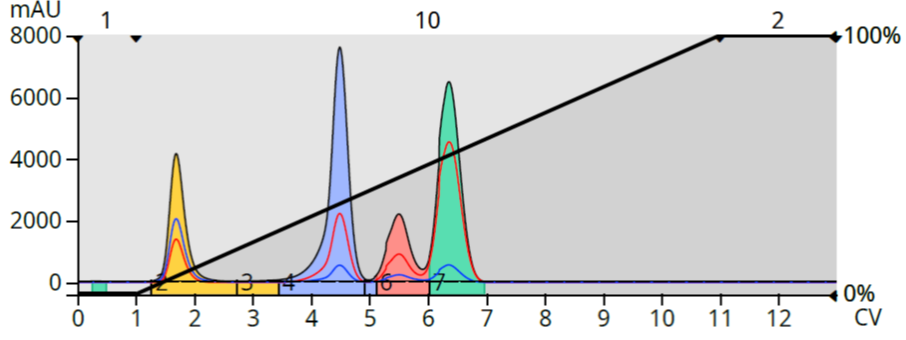 Figure 1. A generic 0-100% linear gradient purification of a 4-component mixture provided an incomplete separation of the target (pink) from the last eluting compound.
Figure 1. A generic 0-100% linear gradient purification of a 4-component mixture provided an incomplete separation of the target (pink) from the last eluting compound.
TLC to Linear Gradient
Rf data from a single TLC plate can be converted into a linear gradient improving purification effectiveness. The generated method reduces gradient slope thus slowing mass-transfer kinetics and increasing selectivity and resolution versus a 0-100% generic gradient, Figure 2. Since TLC can be performed in parallel, chemists find benefit from developing TLC in different solvents and solvent blends.
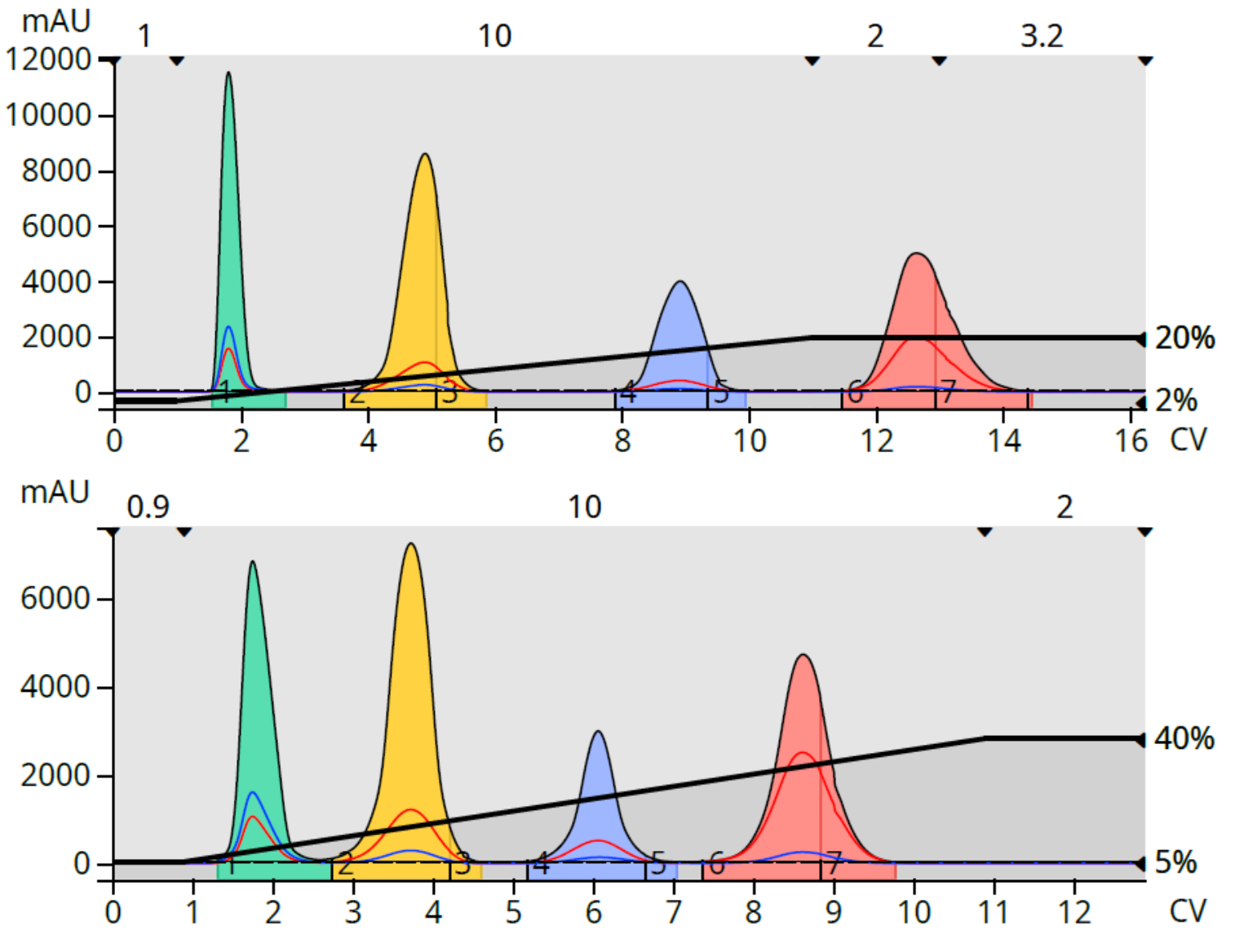
Figure 2. Linear, TLC-based gradients for the 4-component mix. Top - 2-20% provided an excellent separation of the target from the impurities but consumed 240 mL. Bottom - 5-40% provided a complete purification in 195 mL.
TLC to Step Gradient
Further target molecule method optimization is achievable with data from a second set of TLC data using the same solvents but at a different ratio. The solvent ratios and Rf values from the two TLC plates are converted by the flash system into a step gradient designed to isolate the target with maximum purity, Figure 3. The result of which is a shortened, more targeted purification for the synthetic product.
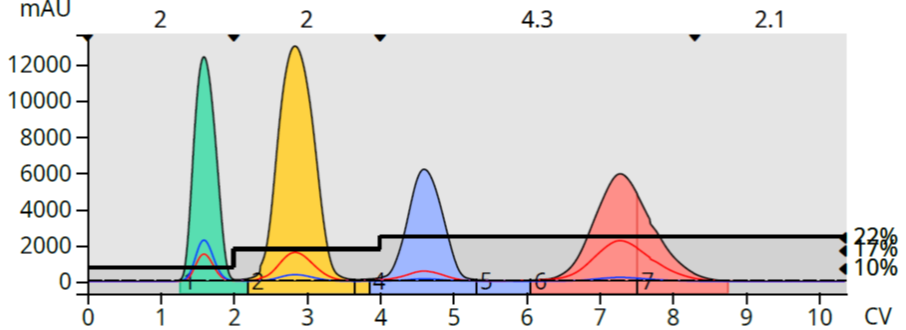
Figure 3. Optimized step gradient fully separated the target product (blue) from its nearest eluting impurities in only 156 mL.
Previous Purification Run Optimization
Another very effective optimization technique uses existing flash purification data. This is a unique feature currently available only with Biotage Isolera systems and can be used with both normal-phase and reversed-phase purifications.
By telling the system which peak requires optimization, the system will suggest a single step gradient method to achieve the targeted molecule purification, in this case a 5%-40% B linear gradient was converted to a 30% to 36% B step gradient for the target molecule, Figure 4.
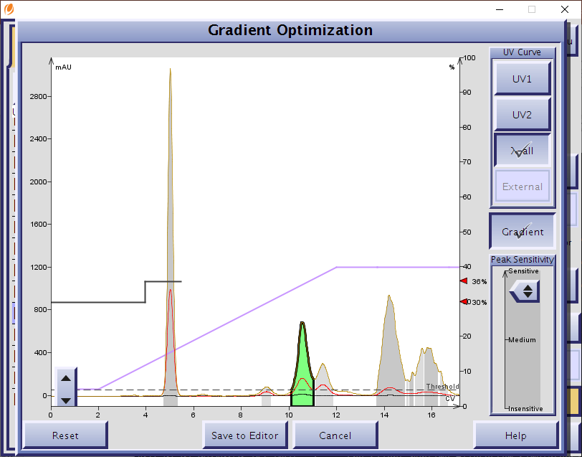 Figure 4. Optimization of a 5%-40% B linear gradient into a 30%-36% B step gradient for the target compound (green).
Figure 4. Optimization of a 5%-40% B linear gradient into a 30%-36% B step gradient for the target compound (green).
As with the TLC to step gradient, having data from another purification run of the same sample but using a different gradient provides another step gradient option, in this case a 36% to 43% B step gradient is generated from an initial 7%-60% B gradient, Figure 5.
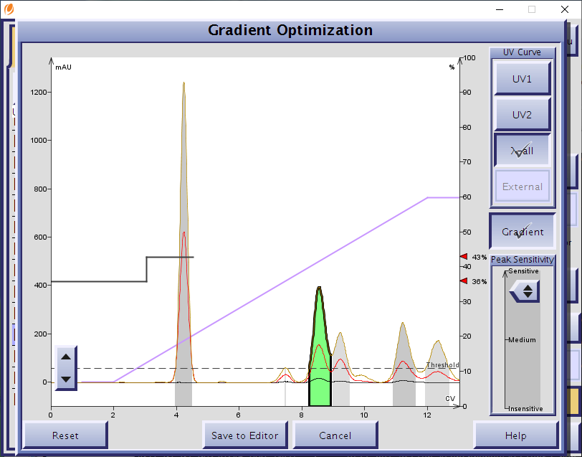 Figure 5. Optimization of a 7-60% linear gradient into a single 36%-34% step gradient for the target compound (green).
Figure 5. Optimization of a 7-60% linear gradient into a single 36%-34% step gradient for the target compound (green).
Combining the suggested step gradients can generate a highly optimized purification method. Using the data from Figures 4 and 5, a 3-step gradient starting at 30% followed by 36% then 43% provided an optimized method for the targeted reaction product, Figure 6.
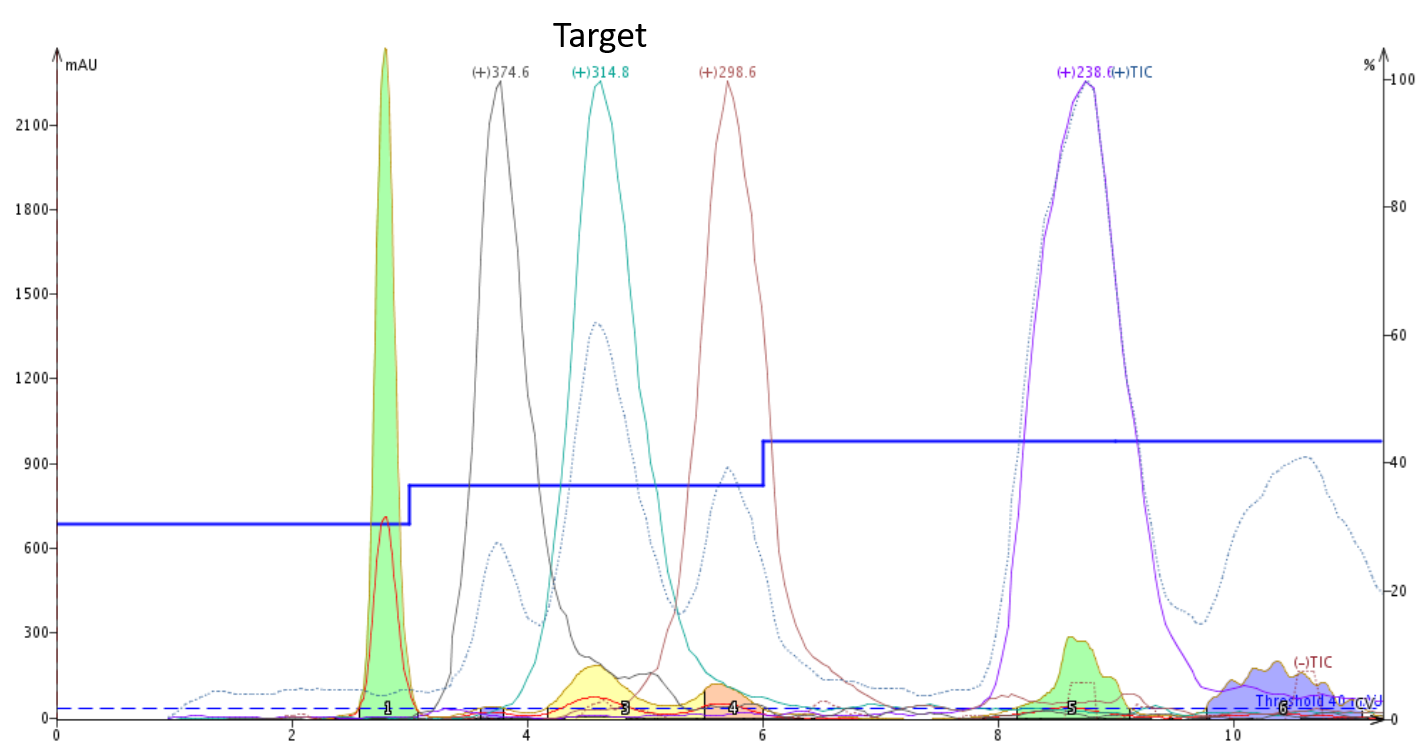
Figure 6. Optimized step gradient separated the target compound (yellow peak) from its closest eluting by-products.
Optimization options are available on Biotage flash systems and are highly effective when utilized for both normal- and reversed-phase purification. They are easy to use and time efficient, leading to higher purity isolated target compounds.
Biotage has a resource library at your disposal. Why not increase your knowledge base by checking it out under our knowledge tab from our homepage:

